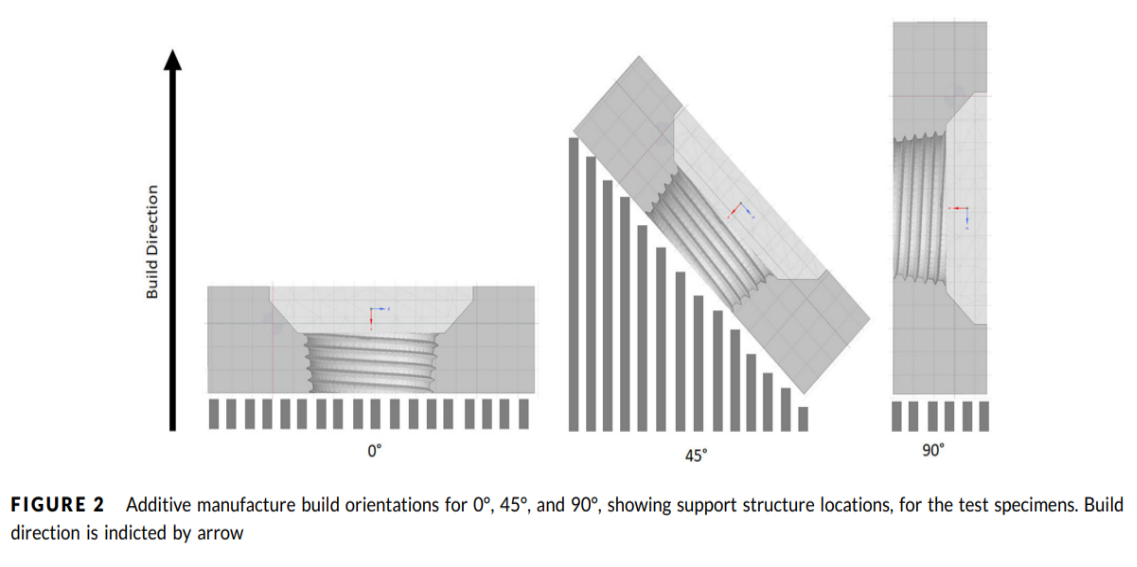Alisdair MacLeod, Michael Patterson, Kate MacTear, Harinderjit Singh Gill
Additive manufacturing, aka three dimensional (3D) printing, is increasingly being used for personalized orthopedic implants. Additively manufactured components normally undergo further processing, in particular 3D printed locking osteosynthesis plates require post-printing screw thread creation. The aim of this study was to compare 3D printed threads with machined and hand-tapped threads for a locking plate application. Pushout tests were performed on 115 additively manufactured specimens with tapered screw holes; additive manufacture was performed at 0°, 20°, 45°, or 90° build orientations. The screw holes were either machined, hand-tapped or 3D printed. The 3D printed screw holes were left as printed, or run through with a tap lubricated with water or with thread cutting oil. Printed threads run through using oil, with a build orientation of 90°, had comparable pushout force (median: 6377 N 95% confidence interval [CI]: 5616-7739 N) to machined (median: 6757 N; 95% CI: 6682-7303 N) and hand-tapped (median: 7805 N; 95% CI: 7154-7850 N) threads. As printed threads and those run through using water had significantly lower pushout forces. This study shows for the first time that 3D printed screw threads for a locking osteosynthesis plate application have comparable strength to traditionally produced screw threads.

